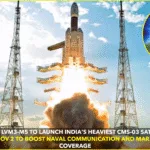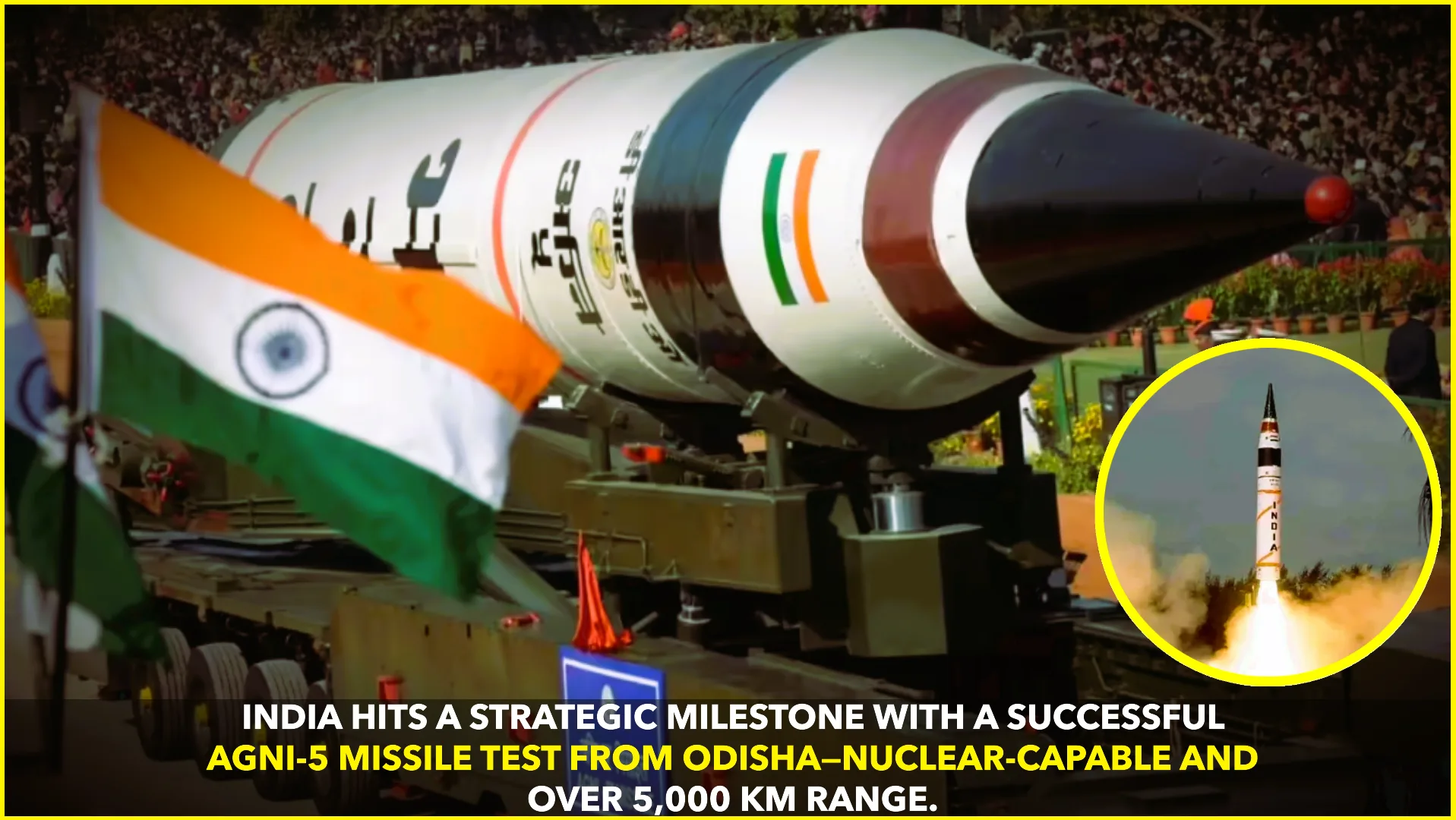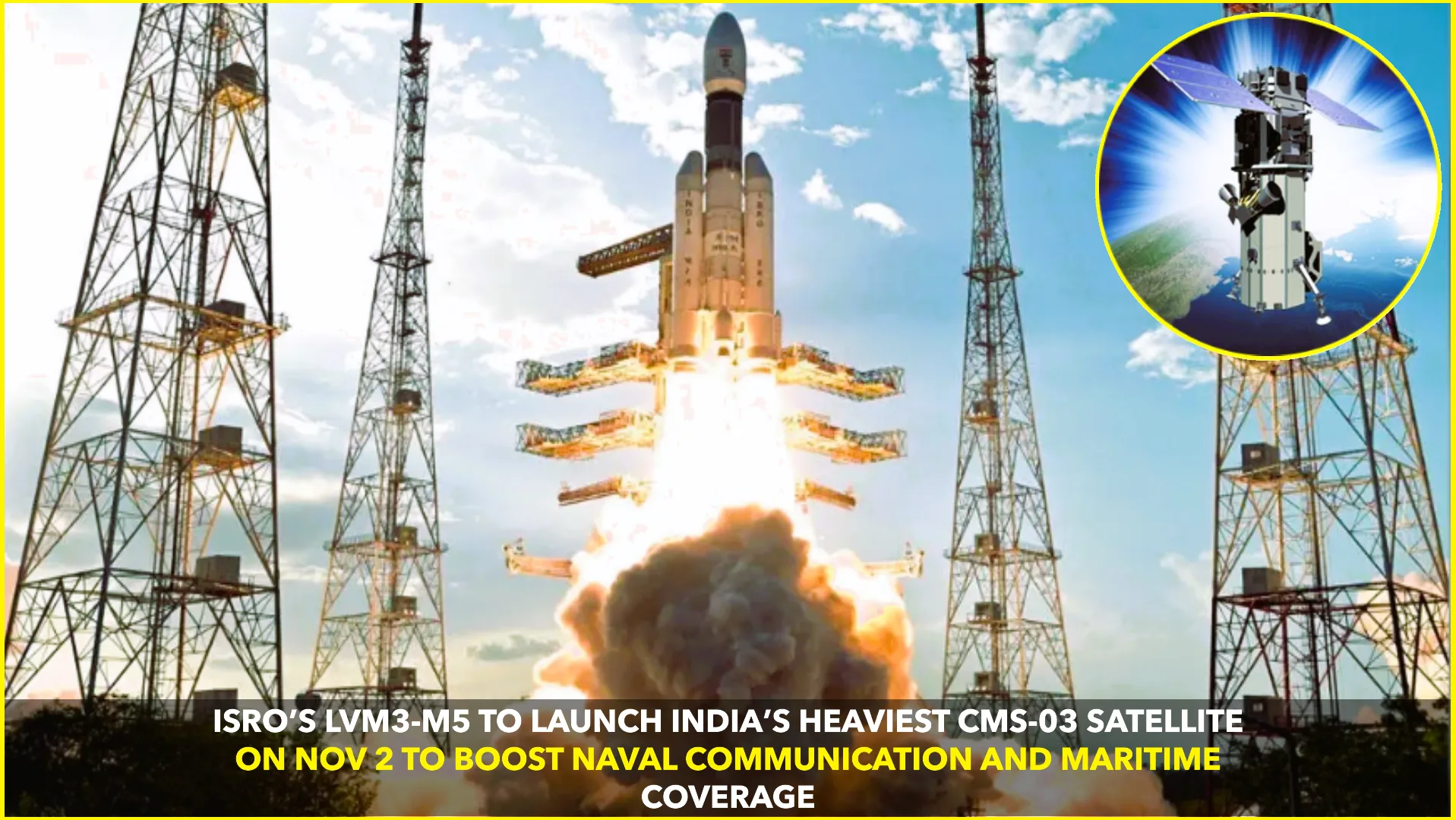In a watershed moment for India’s defense ambitions, the nation has successfully test-fired its advanced Agni-5 missile from the Integrated Test Range in Chandipur, Odisha. This achievement marks a key milestone in India’s long-range strike and nuclear deterrence capabilities, reinforcing its position as a potent strategic power.
The Test: What Happened
On August 20, 2025, the Defence Ministry confirmed that the Agni-5 missile was test-fired from Chandipur under the supervision of the Tri-Service Strategic Forces Command (SFC). The launch was smooth, having validated all operational and technical parameters of the system. This was corroborated by both government sources and major media outlets.The Times of IndiaThe Economic Times+1
Missile Overview: Power and Precision
Agni-5 is a three-stage, solid-fuel Intermediate-Range Ballistic Missile (IRBM) developed indigenously by the DRDO. With a striking capability of over 5,000 kilometres, it firmly falls in the intercontinental class, enabling India to project power across Asia and into parts of Europe.
The missile is nuclear-capable and equipped with advanced navigation, guidance systems, and propulsion technologies—designed to deliver high accuracy and formidable deterrence.
Strategic Significance
- Enhanced Deterrence
Agni-5 fortifies India’s second-strike capability, a key pillar of nuclear deterrence. With its long range and precision, it strengthens the concept of “credible minimum deterrence”—ensuring adversaries face assured consequences in the event of aggression. - Operational Readiness & Mobility
Launched using canister-based technology, Agni-5 can be stored, transported, and fired with minimal preparation. This enhances agility and responsiveness across diverse terrains. - Regional and Global Impact
Agni-5 is capable of targeting deep into northern China, enabling deterrence across critical strategic zones. Some experts even suggest potential reach into parts of Europe if future range enhancements are realized.The Times of India+1
Previous Developments & Future Prospects
India has previously tested Agni-5’s Multiple Independently Targetable Re-entry Vehicle (MIRV) capability during “Mission Divyastra” in March 2024. That trial demonstrated its capacity to carry and simultaneously deploy multiple warheads to different targets. The Indian government continues to develop upgraded variants with extended ranges and enhanced warhead adaptability.
Simultaneously, India is advancing its nuclear triad. With INS Arihant and INS Arighaat already operational and INS Aridhaman slated to join, its submarine-launched ballistic missile potential continues to grow. Meanwhile, Agni-Prime—a modern canisterized missile with a range of 1,000–2,000 km—is undergoing user trials and expected to replace older missile models.The Times of India
Broader Context
The successful Agni-5 launch occurred amid heightened regional security dynamics. Amid territorial rivalries and evolving strategic partnerships—including India’s Quad alignment—the test sends a clear message of deterrence and readiness. According to global think tanks, including SIPRI, while China’s nuclear arsenal continues to expand, India steadily fortifies its own capabilities—now estimated at around 180 warheads.The Times of India
Summing Up
India’s successful test of the Agni-5 missile is more than a technical triumph—it’s a strategic declaration. It demonstrates the country’s advancing defense self-reliance, technological maturity, and unwavering commitment to safeguarding sovereignty. As further upgrades unfold and additional systems come online, India’s deterrent posture will only become more resilient and far-reaching.
Key Highlights at a Glance
- What: Successful test of Agni-5 IRBM—nuclear-capable, >5,000 km range
- When & Where: August 20, 2025, at Integrated Test Range in Chandipur, Odisha
- Who Oversaw: Strategic Forces Command (SFC)
- Why It Matters: Enhances long-range strike, nuclear deterrence, triad support, and strategic flexibility
This moment cements India’s place among nations possessing credible intercontinental strike capabilities—an achievement decades in the making, with yet far-reaching implications for regional and global strategic dynamics.










